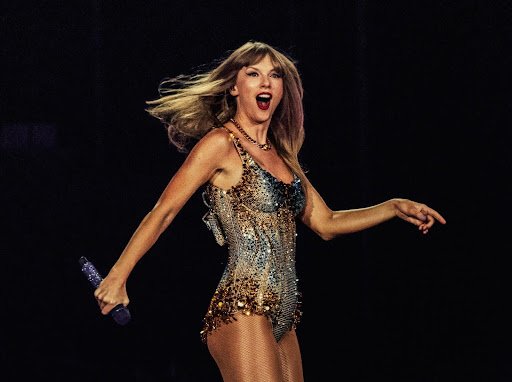My big prediction for 2024: Quality over novelty
Curated by Megan Collins, Cultural Anthropologist, Generational Expert and contributor to the MTD blog
Every year I take it upon myself to identify and label a cultural theme that I foresee defining the emergent trends for next year.
2023 represented a return to culture in full force. People were looking to lean into maximalism both aesthetically and energetically. More was more, bigger was better, louder, more intricate, more colorful, more opulent. 2023 gave us spectacle: Beyonce's Renaissance, Taylor Swift’s Eras The Eras Tour, Barbie-core, and celebrity drama (breakups) galore. Meanwhile, TikTok made video editing more accessible and sleeker than ever (while all the other apps scrambled to keep up) and the resurgence of the Y2K bling era had us rhinestoning like it was 2005.
Like much of culture, this current maximalism-loving era is a reaction to and evolution of the one prior. In 2020 we started to have conversations about the sameness pervasive in products built for scale, especially digital ones. There was Discourse about “Blahducts,” no doubt heightened by the monotony of pandemic life, and the idea that innovation is waning in favor of chasing proven success took hold.
images: House of Sunny, Pinterest Predicts
In reaction to this, we saw culture (& the cool young people) embrace and celebrate difference, absurdity, color, and boldness. Not only was this a way to signal a sense of self in a sea of sameness, it was also a mood booster. “Dopamine Dressing” was all the rage as Gen Z fashionistas embraced fun outfits as a way to hack their moods.
Social media platforms like TikTok and Reels saw the explosion of creators like WidsomKaye, Dani Klaric, Victoria Paris, and Sofia Richie, the poster child of “quiet luxury.” Don’t let the “quiet” in “quiet luxury” fool you; the socialite popularized the “quiet luxury” aesthetic with an extravagantly expensive and heavily shared wedding in the South of France.
However, amidst the embracing of over-the-top aesthetics, opulence seeking, and trend-chasing we also saw increased concerns over both the unsustainability and potentially exploitative nature of mass consumption. As TikTok hawked a new “viral” trend every few days, people began to question what products were actually viral and which were a result of algorithmic manipulation.
Add to that increasing financial woes, the proven decline of once-promising internet brands like Facebook & Twitter, and a perceived lack of innovation and you can start to hypothesize how consumers might react in response. They are becoming either too fatigued to keep up with it all or simply uninterested in hyperconsumption.
Inundated with products, options, and advertising, today’s consumers are tuning out the hype machine. I’d like to say we’ll all become sustainable anti-capitalists, immune to a well-placed Cult Gaia IG ad. But, in reality, I think we will simply get smarter about our consumption, reconsider how we go about purchasing decisions, and demand our dollars work more effectively for us.
These are 3 key reasons I foresee that 2024 will force brands and advertisers to shift from a fixation on NOVELTY to a re-emphasis on QUALITY.
SUSTAINABILITY IS CHIC, FAST FASHION IS A FAUX PAS
In addition to being notoriously bad for the environment, this year fast fashion as a human rights issue became a major talking point. The conversation was largely centered around Shein. Their ill-advised influencer trip to the factory was a huge stain on the brand's already less-than-stellar reputation. As culture increasingly looks down on fast fashion brands as polluters who exploit their workers, the only advantage they have in the status-centric fashion landscape is their low prices.
QUALITY IS MORE ECONOMICAL LONG TERM
However, consumers are starting to see one of the major downsides of lower prices: lower quality. Value-focused Gen Z simply doesn’t have the luxury of being wasteful. Between “shrinkflation” and drop shippers hiking up prices, they’re beginning to be more discerning about the perceived value of their purchases. They’re getting savvier about getting deals, not paying a markup simply because an item is designer, and a penchant for thrifting has taught them the importance of craftsmanship and materials. In 2024, people will start living by the age-old adage, “I’m too poor to buy cheap things.”
IN AN AUTOMATED WORLD HUMAN ATTENTION TO DETAIL IS THE ULTIMATE LUXURY
Finally, I think as AI unlocks digital possibilities, it will also raise the bar for what consumers expect from humans at brands. While AI-generated art is by no means close to replacing designers or creatives, it does allow the layperson to digitally design, create, and visualize anything they can imagine. As such, they will expect brands to offer a unique, complex, human perspective to even be on their radar. There’s a reason people love to spend hours listening to Taylor Swift’s discography & searching for easter eggs, she created a rich text. Not only that but as we spend less time digitally combing through options and search results in favor of conversational AI, I expect human interaction will become a value proposition again, especially in the luxury space. Attention to detail, a lost art in the Amazon age, will be one major way brands can stand out and win customers in 2024.


